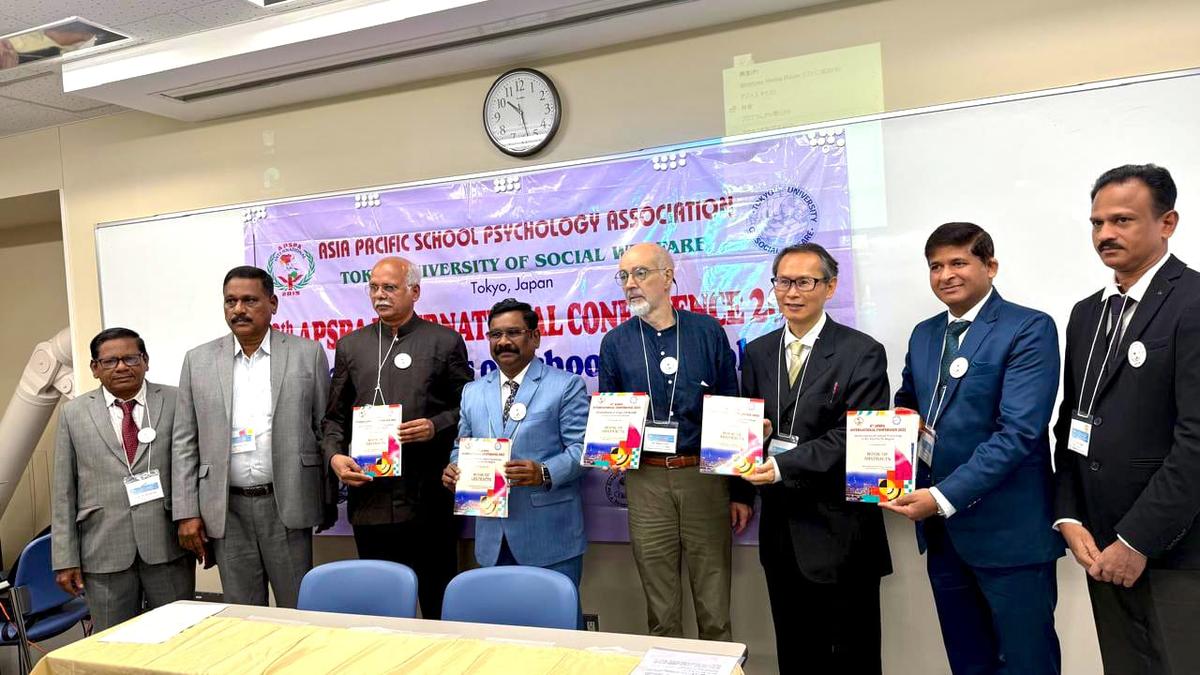PM Modi to inaugurate redeveloped Mata Tripura Sundari Temple in Tripura, a sacred Shakti Peetha and rare confluence of Shakta–Vaishnava traditions
PM Modi will inaugurate the redeveloped Mata Tripura Sundari Temple, one of the revered 51 Shakti Peethas, later today at Udaipur in Gomati district. The redevelopment project has been completed under the Centre’s PRASHAD (Pilgrimage Rejuvenation and Spiritual Heritage Augmentation Drive) Scheme, with the aim of preserving heritage while boosting religious tourism in Tripura. The Prime Minister, arriving in Agartala this afternoon after his Arunachal Pradesh visit, will proceed to Udaipur where he will perform a puja at the temple. As per the official schedule, no public address has been planned during the visit. Elaborate security arrangements are already in place in both Agartala and Udaipur. A temple steeped in history and legend The Tripura Sundari Temple, also known locally as Matabari or Tripureswari Temple, is one of the most significant Shakti shrines in India. According to legend, the temple marks the spot where the right foot of Goddess Sati fell during Lord Shiva’s Tandav dance, sanctifying it as a Shakti Peetha. In a short while, PM @narendramodi will inaugurate the redeveloped Mata Tripura Sundari Temple at Udaipur, Tripura — one of the 51 sacred Shakti Peethas where Maa Sati’s right foot is believed to have fallen.Built in 1501 by Maharaja Dhanya Manikya, Matabari now stands renewed… pic.twitter.com/0YgA1dSsyw— OpIndia.com (@OpIndia_com) September 22, 2025 The temple was built in 1501 CE by Maharaja Dhanya Manikya, who, inspired by recurring dreams of the Goddess, installed her idol on a hillock near his then-capital Udaipur. Over time, the temple became not only a spiritual center but also a unique bridge between the Vaishnava and Shakta traditions. Lord Vishnu is worshipped here in the form of a Shalgram Shila, alongside Goddess Tripura Sundari—a rare feature among Shakti shrines. Architecturally, the sanctum is built in the Bengali Ek-Ratna style, perched atop a hillock shaped like a tortoise, giving the temple its other name, Kurma Pitha. A mystical Sri Yantra carved beneath the idol’s feet further elevates its spiritual significance, symbolizing cosmic unity of masculine and feminine energies. Inside the sanctum, two black stone idols stand: the larger 5-foot idol of Maa Tripura Sundari, and the smaller 2-foot idol known as Chhoto-Ma, believed to have accompanied Tripura’s kings on battles and expeditions. The temple traditions are distinct. Red hibiscus flowers are considered most auspicious offerings, while the Matabari Peda, the temple’s signature prasad, recently received the prestigious Geographical Indication (GI) tag. Cultural and spiritual magnet The temple is not just a place of worship but a major cultural hub. The annual Diwali Mela at Matabari, an official two-day celebration, draws lakhs of devotees from across India and neighboring Bangladesh. It reflects the multicultural fabric of Tripura and highlights the temple’s role as a living institution of faith and festivity. Redevelopment under the PRASHAD scheme The ongoing redevelopment project is part of a ₹54.04 crore modernization plan, jointly funded by the Centre, which contributed ₹34.43 crore, and the state government, which provided ₹17.61 crore. Sanctioned in 2021, the project is designed to enhance both infrastructure and pilgrim facilities, ensuring greater comfort and convenience for the steadily increasing number of visitors. The redevelopment includes marble flooring, improved pathways, and renovated entrances to give devotees easier and more dignified access to the shrine. A newly constructed three-storied complex has been built to house peda stalls, a meditation hall, guest accommodations, and office spaces, while additional facilities such as a food court, drinking water kiosks, proper drainage systems, and toilet blocks have been incorporated for the benefit of pilgrims. The plan also provides residential areas for priests, volunteers, and temple staff, alongside waiting rooms and sitting spaces for devotees. A VIP lounge and meditation hall have been added to accommodate special visitors, and a Matabari gallery, along with shops for locals, has been created to showcase the region’s heritage and provide opportunities for local entrepreneurship. Boost to local economy Beyond its spiritual dimension, the project is also an economic catalyst. With over 12–15 lakh devotees visiting annually, the redeveloped complex is expected to attract even more pilgrims, strengthening local hotels, transport, handicrafts, food businesses, and guides. Officials expect the project to generate direct and indirect employment for the local community—ranging from shopkeepers and artisans to taxi operators and hospitality providers. By branding Udaipur as a religious-tourism hub, the state envisions Mata Tripura Sundari Temple as a centerpiece for cultural pride and economic growth. A divine union of traditions At its core, the Mata Tripura Sundari Temple embodies



PM Modi will inaugurate the redeveloped Mata Tripura Sundari Temple, one of the revered 51 Shakti Peethas, later today at Udaipur in Gomati district. The redevelopment project has been completed under the Centre’s PRASHAD (Pilgrimage Rejuvenation and Spiritual Heritage Augmentation Drive) Scheme, with the aim of preserving heritage while boosting religious tourism in Tripura.
The Prime Minister, arriving in Agartala this afternoon after his Arunachal Pradesh visit, will proceed to Udaipur where he will perform a puja at the temple. As per the official schedule, no public address has been planned during the visit. Elaborate security arrangements are already in place in both Agartala and Udaipur.
A temple steeped in history and legend
The Tripura Sundari Temple, also known locally as Matabari or Tripureswari Temple, is one of the most significant Shakti shrines in India. According to legend, the temple marks the spot where the right foot of Goddess Sati fell during Lord Shiva’s Tandav dance, sanctifying it as a Shakti Peetha.
In a short while, PM @narendramodi will inaugurate the redeveloped Mata Tripura Sundari Temple at Udaipur, Tripura — one of the 51 sacred Shakti Peethas where Maa Sati’s right foot is believed to have fallen.
— OpIndia.com (@OpIndia_com) September 22, 2025
Built in 1501 by Maharaja Dhanya Manikya, Matabari now stands renewed… pic.twitter.com/0YgA1dSsyw
The temple was built in 1501 CE by Maharaja Dhanya Manikya, who, inspired by recurring dreams of the Goddess, installed her idol on a hillock near his then-capital Udaipur. Over time, the temple became not only a spiritual center but also a unique bridge between the Vaishnava and Shakta traditions. Lord Vishnu is worshipped here in the form of a Shalgram Shila, alongside Goddess Tripura Sundari—a rare feature among Shakti shrines.
Architecturally, the sanctum is built in the Bengali Ek-Ratna style, perched atop a hillock shaped like a tortoise, giving the temple its other name, Kurma Pitha. A mystical Sri Yantra carved beneath the idol’s feet further elevates its spiritual significance, symbolizing cosmic unity of masculine and feminine energies.

Inside the sanctum, two black stone idols stand: the larger 5-foot idol of Maa Tripura Sundari, and the smaller 2-foot idol known as Chhoto-Ma, believed to have accompanied Tripura’s kings on battles and expeditions.
The temple traditions are distinct. Red hibiscus flowers are considered most auspicious offerings, while the Matabari Peda, the temple’s signature prasad, recently received the prestigious Geographical Indication (GI) tag.
Cultural and spiritual magnet
The temple is not just a place of worship but a major cultural hub. The annual Diwali Mela at Matabari, an official two-day celebration, draws lakhs of devotees from across India and neighboring Bangladesh. It reflects the multicultural fabric of Tripura and highlights the temple’s role as a living institution of faith and festivity.
Redevelopment under the PRASHAD scheme
The ongoing redevelopment project is part of a ₹54.04 crore modernization plan, jointly funded by the Centre, which contributed ₹34.43 crore, and the state government, which provided ₹17.61 crore. Sanctioned in 2021, the project is designed to enhance both infrastructure and pilgrim facilities, ensuring greater comfort and convenience for the steadily increasing number of visitors.

The redevelopment includes marble flooring, improved pathways, and renovated entrances to give devotees easier and more dignified access to the shrine. A newly constructed three-storied complex has been built to house peda stalls, a meditation hall, guest accommodations, and office spaces, while additional facilities such as a food court, drinking water kiosks, proper drainage systems, and toilet blocks have been incorporated for the benefit of pilgrims.
The plan also provides residential areas for priests, volunteers, and temple staff, alongside waiting rooms and sitting spaces for devotees. A VIP lounge and meditation hall have been added to accommodate special visitors, and a Matabari gallery, along with shops for locals, has been created to showcase the region’s heritage and provide opportunities for local entrepreneurship.
Boost to local economy
Beyond its spiritual dimension, the project is also an economic catalyst. With over 12–15 lakh devotees visiting annually, the redeveloped complex is expected to attract even more pilgrims, strengthening local hotels, transport, handicrafts, food businesses, and guides.
Officials expect the project to generate direct and indirect employment for the local community—ranging from shopkeepers and artisans to taxi operators and hospitality providers.
By branding Udaipur as a religious-tourism hub, the state envisions Mata Tripura Sundari Temple as a centerpiece for cultural pride and economic growth.
A divine union of traditions
At its core, the Mata Tripura Sundari Temple embodies the unison of Shiva and Shakti, and the rare confluence of Shakta and Vaishnava traditions. Its legends, architecture, and living traditions make it not just a temple, but a spiritual destination of unparalleled uniqueness.
With Prime Minister Modi’s inauguration of the redeveloped complex, the temple is set to embark on a new chapter—one that preserves its ancient sanctity while preparing for a vibrant future as a global spiritual and cultural landmark.



























































































































